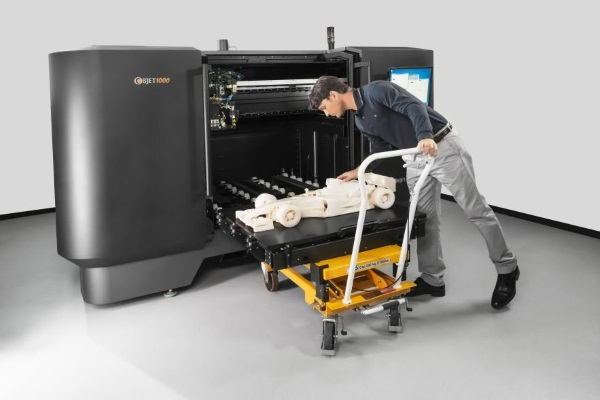This month we focus on optoelectronics and all the promises it brings to us including uses in automotive LED lighting, sensor infused smart lighting for outdoor use and even one on digital light processing for digital micro-mirror devices that can pattern UV light to project the image of each layer into resin for additive manufacturing or as it is commonly called 3D printing. This 3D printing technology is called a disruptive technology by many because it has the potential to affect all avenues of life including automotive, industrial, medical, consumer goods, and uses we haven’t even thought about yet. 
3D printed prosthetics are possible
Where is this technology going? Think big, think factories full of industrial grade 3D printers to make anything imaginable for these future businesses. For example, GE Aviation has announced plans to open a manufacturing facility to produce 100,000 fuel nozzles. Another company, Belgian-based, Materialise, announced they are planning to offer an aluminum alloy to industrial customers. The market for 3D metal printers, according to IDTechEx, is $440M today and is expected to grow to $6B by 2025. This metal 3D printing is now possible for conventional manufacturing, direct manufacturing of complex end-use parts and even direct printing of whole objects. Companies such as Lockheed Martin, Siemens, John Deere, and even Rolls Royce are getting into 3D printing using metals. Find more uses for 3D printing

Race cars and family vehicles in both toy and full-size can be built
It doesn’t stop there because 3D printing could affect more than just technology products. The possibilities are for all of us to have 3D printers in our homes to print furniture and even food! Think what that could mean to the food industry – we could get the components to make a meal exactly the amount and way we want it. What it means to the food stuff industry is that they need to control the components of the meal that will go into the 3D printer.

Food made to order via 3D printing
This technology may also affect the job market by doing away with some jobs and probably creating new ones. For example, automation of manufacturing with robotics and 3D printing could lead to the loss of assembly line manufacturing jobs but companies will need more designers as well as maintenance personnel.
There are challenges to this unfolding technology. Some say that intellectual property rights issues will need to be addressed. Also, what about the responsibility of product safety? For example, for some products different companies are responsible for the blueprints and the production of the parts. You can see that could be a legal entanglement for medical or high-tech products like engine parts. Since this is a worldwide event, who will take the lead with legislation?
Advertisement





